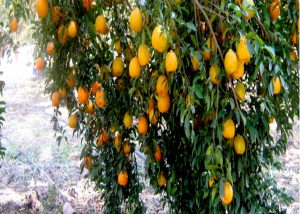

Iran is one of the first countries in the world that has continued agriculture since the beginning, and as statistics explain, nearly all Iranians can use one-third of their country for agriculture. Notwithstanding, some areas have remained dry and dehydrated due to the lack of water and the inappropriate distribution of water, and are not appropriate for cultivation and agriculture. According to statistics, only twelve percent of Iran has the capacity to operate agricultural performances, while less than a third of these lands are irrigated and the rest is cultivated dry agriculture.

Drop irrigation (local irrigation) according to its name irritates plants in drops. This type of irrigation operates in such a way that water is poured into the foundations of plants through small holes that can be named droppers. In this method, water is slowly poured at the base of the plant, which saves and increases irrigation efficiency. On the other hand, a small area and depth are moistened from the soil surface in this method, consequently, the rate of water evaporation is similarly reduced. Water passes through a network of valves, pipes, and droppers in a drop irrigation system. A drop irrigation system can be more efficient compared to other types of irrigation methods such as surface and sprinkler irrigation depending on the design quality of the installed system.
Advantages of drop irrigation
We can name some advantages of the drop irrigation system as follows:
• Scouring, fertilizer, and nutrient waste are reduced due to local irrigation.
• If it is properly designed, executed, and managed, it will have high irrigation efficiency.
• It does not require farm alignment and it is possible to be applied on sloping lands.
• It is possible to easily apply it in agricultural fields with irregular shapes.
• It is possible to use safely non-potable recycled water.
• Moisture is provided in the root zone.
• Soil type is less significant in determining irrigation times.
• It decreases the irrigation time.
• Soil erosion is reduced.
• Weed growth is reduced.
• The amount of irrigation and water distribution in the nozzles is extremely uniform and controllable.
• It has lower manpower costs than other irrigation methods.
• It is possible to adjust the irrigation rate using valves and droppers.
• It is possible to minimize the amount of fertilizer loss using a drop fertilizer system.
• It is possible to decrease plant diseases by keeping the foliage of the plants dry.
• The drop irrigation system requires low pressure compared to other irrigation methods; hence, it also consumes lower energy.

It continues…..


Drop Irrigation